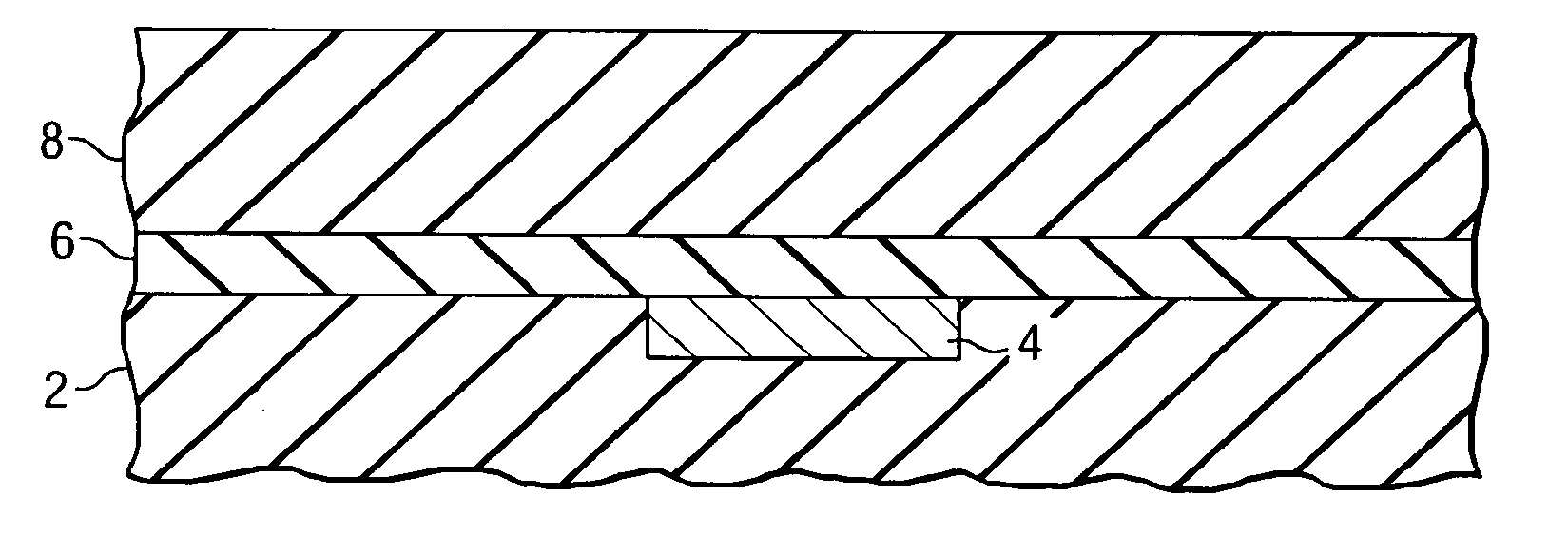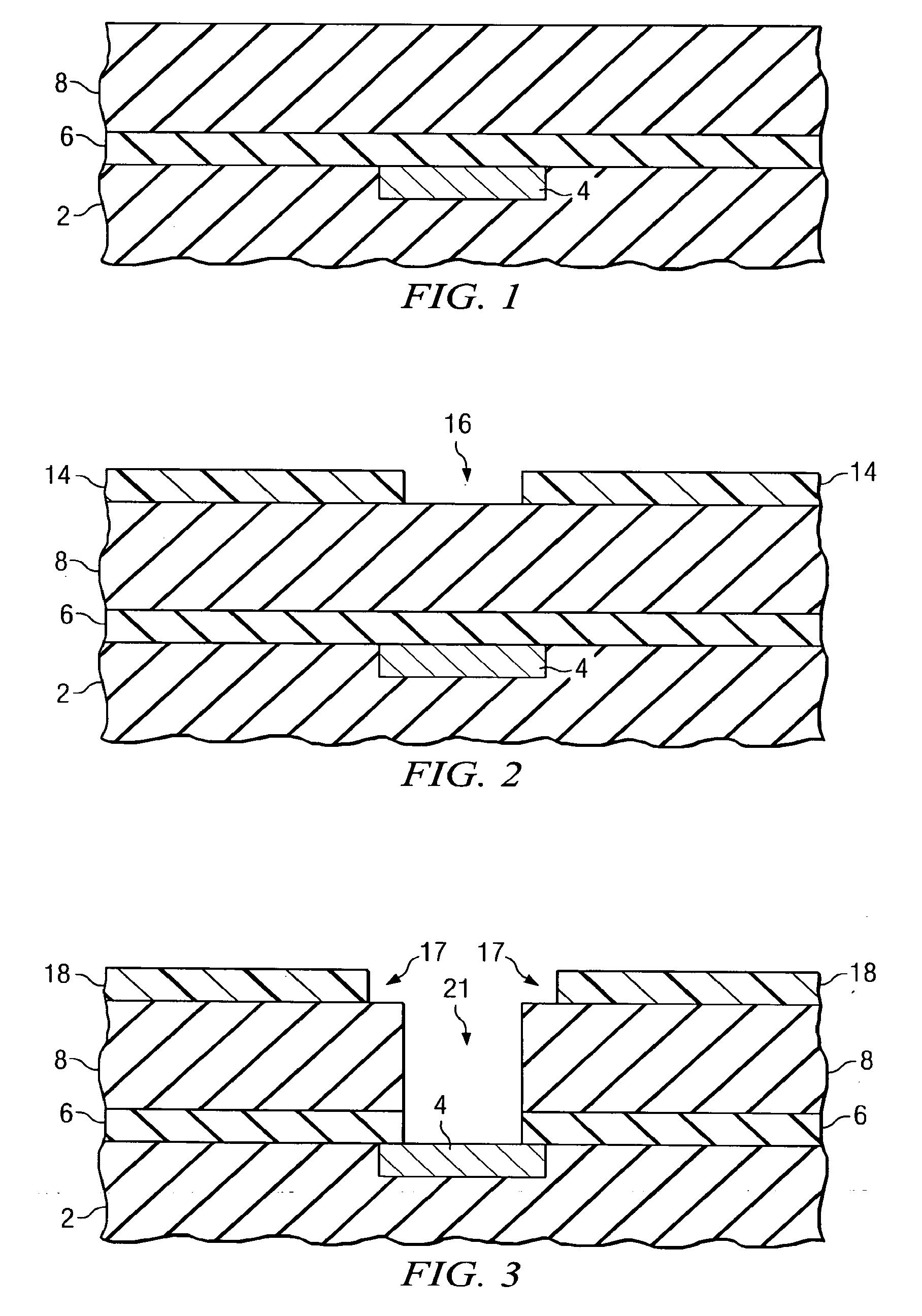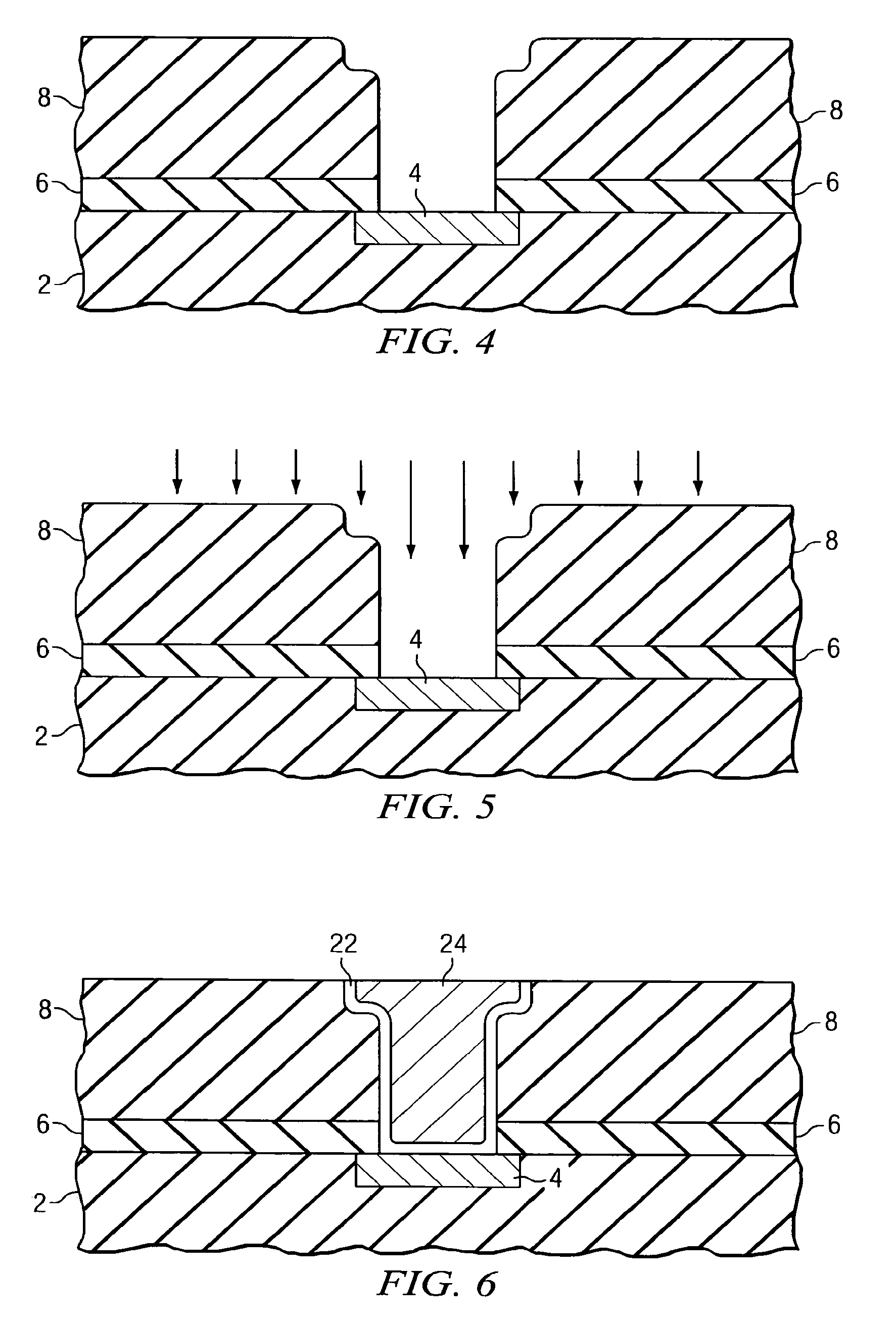Repair of carbon depletion in low-k dielectric films
- Summary
- Abstract
- Description
- Claims
- Application Information
AI Technical Summary
Benefits of technology
Problems solved by technology
Method used
Image
Examples
Embodiment Construction
[0022] The making and using of the presently preferred embodiments are discussed in detail below. It should be appreciated, however, that the present invention provides many applicable inventive concepts that may be embodied in a wide variety of specific contexts.
[0023] The present invention will now be described with respect to preferred embodiments in a specific context, namely specific steps in the manufacture an integrated circuit comprising multiple level copper metallization formed by way of a dual damascene process. Complete details of an exemplary dual damascene manufacturing process are provided in U.S. Pat. No. 6,521,542 to Armacost et al. and are incorporated herein by reference. It is believed that embodiments of this invention are advantageous when used in a damascene metallization process. It is further believed that embodiments described herein will benefit other manufacturing stages involving low-k films not specifically illustrated. Therefore, the specific embodime...
PUM
 Login to View More
Login to View More Abstract
Description
Claims
Application Information
 Login to View More
Login to View More - R&D
- Intellectual Property
- Life Sciences
- Materials
- Tech Scout
- Unparalleled Data Quality
- Higher Quality Content
- 60% Fewer Hallucinations
Browse by: Latest US Patents, China's latest patents, Technical Efficacy Thesaurus, Application Domain, Technology Topic, Popular Technical Reports.
© 2025 PatSnap. All rights reserved.Legal|Privacy policy|Modern Slavery Act Transparency Statement|Sitemap|About US| Contact US: help@patsnap.com



